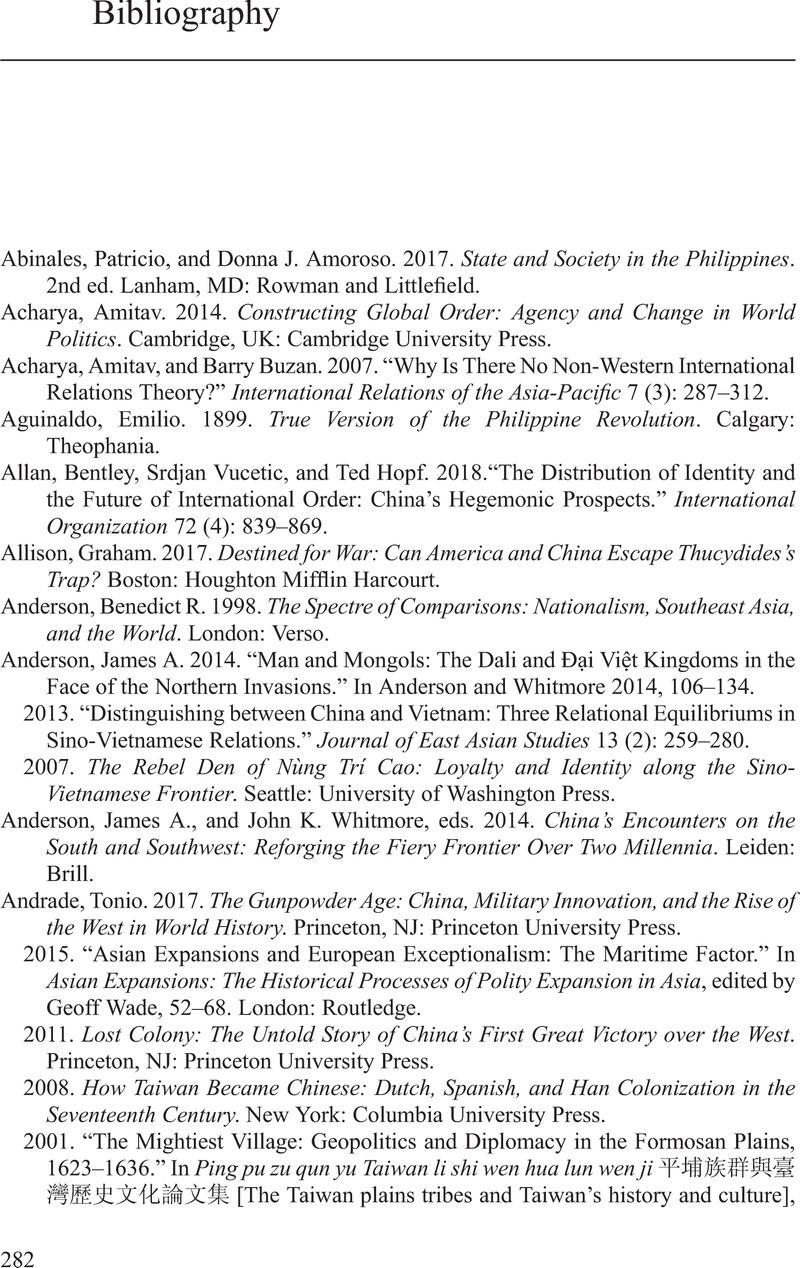Bibliography
Published online by Cambridge University Press: 08 October 2020
Summary

- Type
- Chapter
- Information
- East Asia in the WorldTwelve Events That Shaped the Modern International Order, pp. 282 - 308Publisher: Cambridge University PressPrint publication year: 2020



